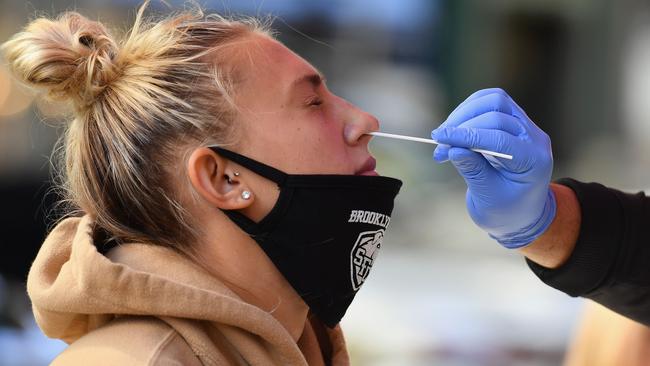The high risk areas for infection and how COVID spreads in them
Now Victorians are free from lockdown there are high-risk infection hotspots to know about as life returns to normal. See how the COVID-19 spreads in these locations and how to avoid catching the virus.

HS Coronavirus News
Don't miss out on the headlines from HS Coronavirus News. Followed categories will be added to My News.
Melburnians have been warned to exercise caution in high-risk infection hot spots as the city wakes up from lockdown.
Graphics created for El Pais newspaper in Europe show how the virus moves inside enclosed spaces.
Deakin University chair of epidemiology Catherine Bennett said cafes and restaurants, hair salons, shopping centres, public transport and inside private homes were the places people were most at risk of catching COVID-19.
She said poor ventilation, the number of people and the length of time spent combined to make certain indoor spaces high risk.
“It’s a combination of small spaces with little ventilation, the time spent together and if you’re wearing masks or not, even talking loudly – it all comes together to create that high risk,” Professor Bennett said.
“Places with shared facilities such as public toilets and anywhere where you could be getting condiments for your food at a takeaway stand, playgrounds, anywhere with common touch surfaces have risk.”
For those returning to work, Professor Bennett said offices were much safer than visiting a private home with most workplaces adopting COVID-safe plans.
“The concern is the people who might be travelling into work on public transport and going down to the mall for lunch,” she said.
She said the same principle applied to our homes, with visitors potentially bringing infection through your doors.
“While you want your home to be the safest place, you have to work to protect it,” she said.
“It’s worth stopping and thinking about how much exposures you want coming in – it’s about catching up with the people who matter most.”
University of South Australia epidemiologist Adrian Esterman said airconditioning was one of a range of factors that could lessen the risk.
“Say there is an infected person transmitting particles that were in the air, you could walk through and pick it up hanging there,” he said.
“But if you have airconditioning or movement in the room it’ll clear those particles away, and having windows open is better – it’s just about that flow to keep any particles moving on.”
Other factors such as how infectious a person with the virus may be also played a role, he said.
“We know that we have a lot of people who have no symptoms or few symptoms and they aren’t as infectious and yet some people are highly infectious,” he said.
To read the full story and view the graphics go to: El Pais
MORE NEWS:
OPINION: NOW LOCKDOWN IS OVER, WHAT NEXT?
